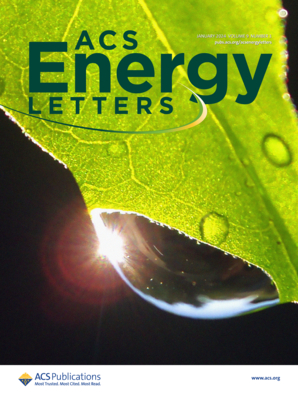通过光电倍增机制设计量子点上转换红外图像传感器
IF 18.2
1区 材料科学
Q1 CHEMISTRY, PHYSICAL
引用次数: 0
摘要
上转换红外(IR)图像传感器可选择性地从吸收了红外光子的区域发射可见光光子,从而简化了制造过程,无需复杂的像素集成。这些无像素上转换红外图像传感器可在物联网、安防和生物成像应用中实现低成本、无损成像,包括识别血液循环、肿瘤和血管结构。在这里,我们设计了量子点上转换红外图像传感器(QUIS)的材料和结构,并通过诱导光子倍增实现了982%的光子对光子效率。量子点上转换红外图像传感器(QUIS)采用倒置结构设计,以实现电荷平衡,并使用镁合金氧化锌纳米粒子作为电子传输层来控制电子-空穴比。我们分析了 QUIS 中电荷的类型和数量,阐明了光倍增的驱动机制以及光子对电子效率超过 100000% 的原因。我们将无像素 QUIS 作为生物成像传感器进行了演示,以检测人体运动和血脉检测。本文章由计算机程序翻译,如有差异,请以英文原文为准。

Designing a Quantum Dot Upconversion Infrared Image Sensor via a Photomultiplication Mechanism
The upconversion infrared (IR) image sensor selectively emits visible light photons from the regions that have absorbed IR photons, allowing for simplified manufacturing without the need for complex pixel integration. These pixel-less upconversion IR image sensors enable low-cost, nondestructive imaging in the Internet of Things, security, and bioimaging applications, which include identifying blood circulation, tumors, and vascular structures. Here we designed the material and structure of a quantum dot upconversion IR image sensor (QUIS) and achieved a photon-to-photon efficiency of 982% by inducing photomultiplication. A QUIS, designed with an inverted structure for charge balance, uses Mg-alloyed ZnO nanoparticles as an electron transport layer to control the electron–hole ratio. We analyzed the type and amount of charge present within the QUIS, elucidating the mechanism driving photomultiplication and the origin of photon-to-electron efficiency exceeding 100000%. The pixel-free QUIS is demonstrated as a bioimaging sensor by detecting human movement and blood pulse detection.
求助全文
通过发布文献求助,成功后即可免费获取论文全文。
去求助
来源期刊

ACS Energy Letters
Energy-Renewable Energy, Sustainability and the Environment
CiteScore
31.20
自引率
5.00%
发文量
469
审稿时长
1 months
期刊介绍:
ACS Energy Letters is a monthly journal that publishes papers reporting new scientific advances in energy research. The journal focuses on topics that are of interest to scientists working in the fundamental and applied sciences. Rapid publication is a central criterion for acceptance, and the journal is known for its quick publication times, with an average of 4-6 weeks from submission to web publication in As Soon As Publishable format.
ACS Energy Letters is ranked as the number one journal in the Web of Science Electrochemistry category. It also ranks within the top 10 journals for Physical Chemistry, Energy & Fuels, and Nanoscience & Nanotechnology.
The journal offers several types of articles, including Letters, Energy Express, Perspectives, Reviews, Editorials, Viewpoints and Energy Focus. Additionally, authors have the option to submit videos that summarize or support the information presented in a Perspective or Review article, which can be highlighted on the journal's website. ACS Energy Letters is abstracted and indexed in Chemical Abstracts Service/SciFinder, EBSCO-summon, PubMed, Web of Science, Scopus and Portico.
 求助内容:
求助内容: 应助结果提醒方式:
应助结果提醒方式:


